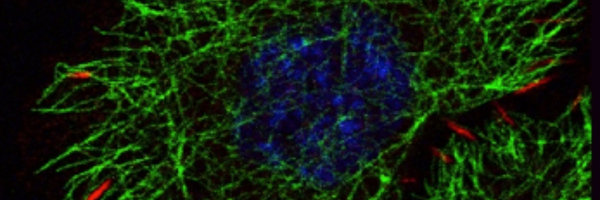
Research
Integrins are cell surface receptors that link proteins of the extracellular matrix with the actin cytoskeleton. The ligand binding property of integrins requires an activation step that is characterized by a conformational change of the ectodomain, separation of the transmembrane and cytoplasmic domains and the opening of the ligand binding pocket.
Following ligand binding integrins cluster and assemble gigantic signalling hubs called adhesome that contain hundreds of different proteins. With the help of these signalling hubs and the connection to the actomyosin network integrins are able to trigger biochemical and transduce and receive mechanical signals. The residence time of integrins on the cell surface is short and within a few minutes they internalize and most of them recycle back to the cell surface. This intracellular trafficking profoundly affects integrin function, signaling properties and cell surface distribution. Furthermore, there is accumulating evidence that integrins are checked for their integrity in endosomes and if damaged, they are sorted for lysosomal degradation. In our laboratory we study how integrins become activated, how they execute their signaling tasks, why they recycle, and how a damaged integrin is recognized in endsomomes.